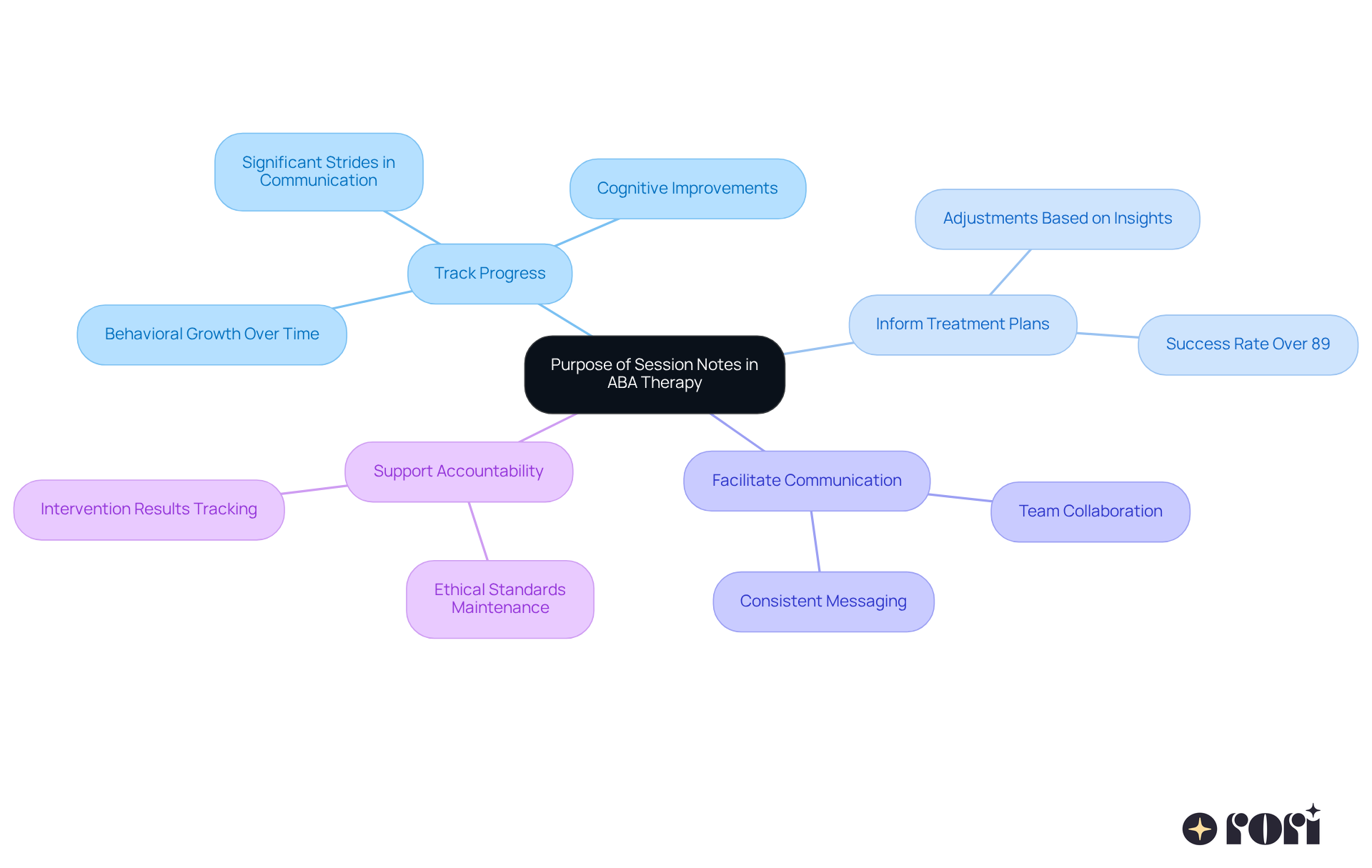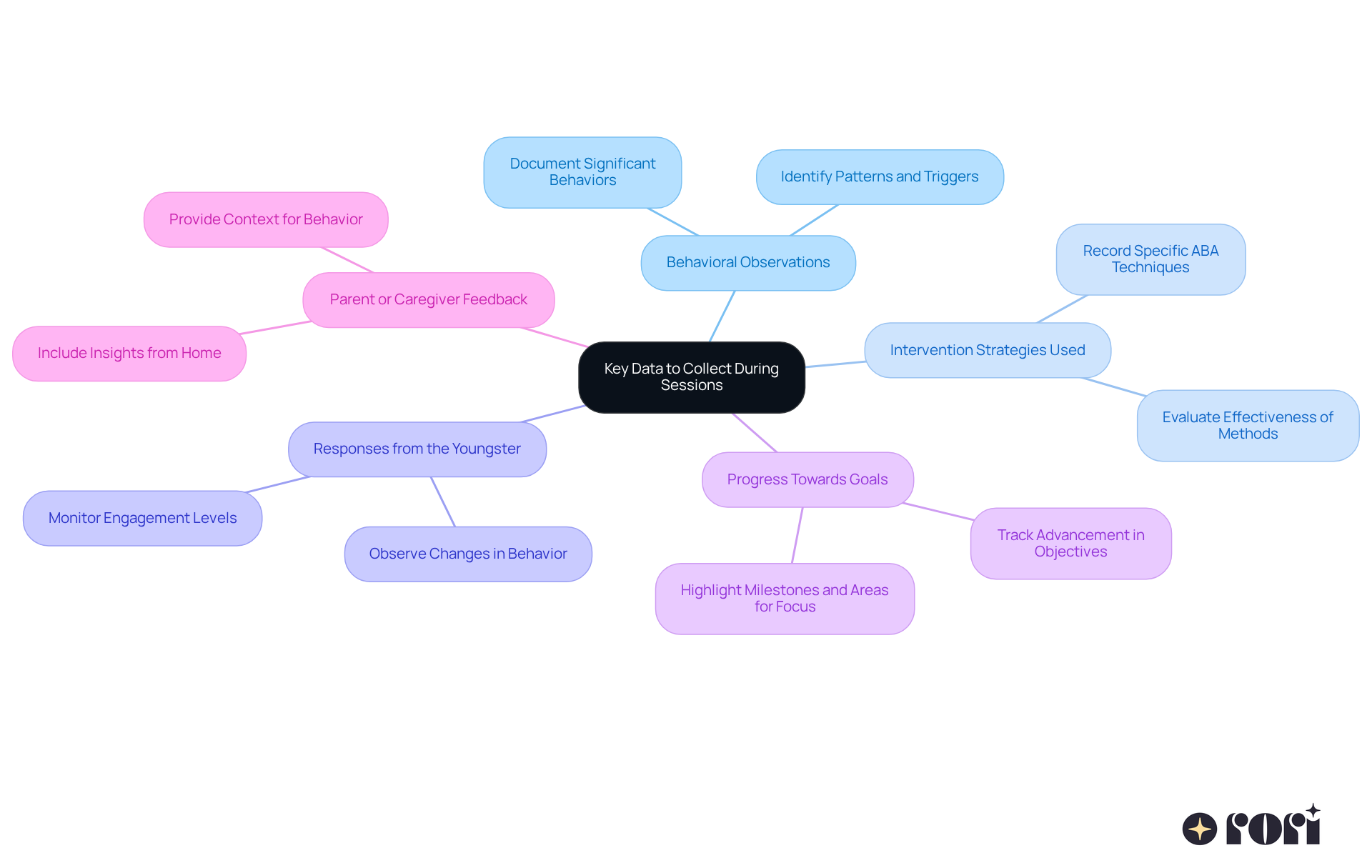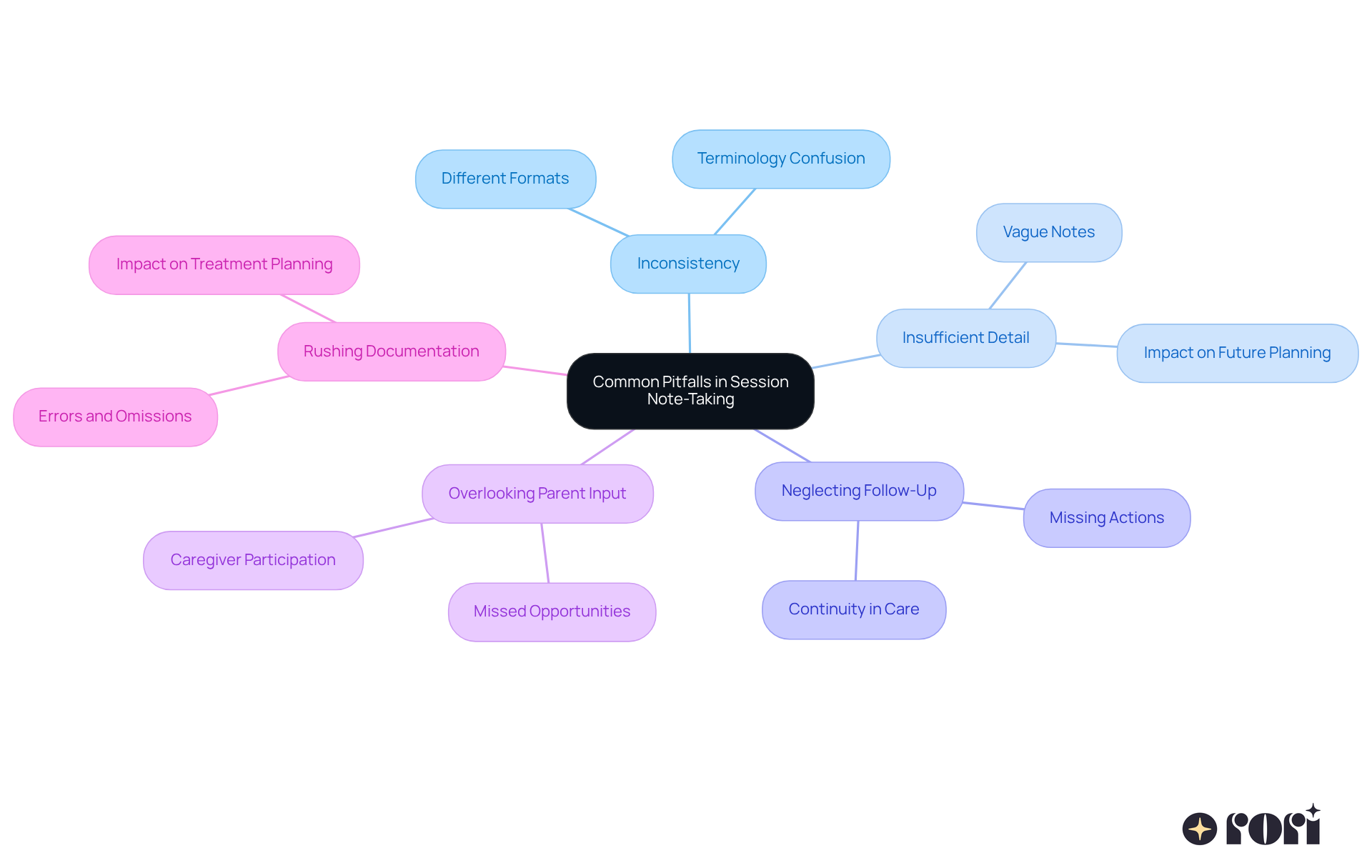The article highlights how the data collected during ABA therapy sessions acts as essential session notes. These notes are crucial for tracking progress and shaping treatment plans, all while keeping communication flowing among team members and families.
Think about it: thorough documentation not only enhances accountability but also boosts the effectiveness of interventions. It fosters a collaborative approach to each child's therapeutic journey, ensuring everyone is on the same page.
Let’s explore this together! By understanding the importance of these notes, we can see how they play a vital role in supporting our children’s growth and development. We’re here to help you every step of the way!
Welcome to the intricate world of Applied Behavior Analysis (ABA) therapy, where one critical component truly makes a difference: session notes. 📚 These detailed records do more than just track a child's progress; they play a vital role in shaping treatment plans and enhancing communication among caregivers and clinicians.
As therapists gather data during sessions, it transforms into invaluable session notes. But here’s the challenge: how can therapists ensure they capture the right information to maximize therapeutic outcomes? 🤔 In this article, we’ll explore essential practices of data collection and documentation, revealing just how impactful meticulous session notes can be on the effectiveness of ABA interventions. Let’s dive in together!
Documentation is such an important part of ABA therapy! It acts like a detailed diary of each child's journey and the techniques we use during our sessions. This not only helps clinicians and BCBAs but also benefits parents in several meaningful ways:
Track Progress: When we carefully document behaviors and responses, we can really see how a child grows over time. It’s amazing to watch! Studies show that kids in ABA therapy can make significant strides in communication, cognition, and overall behavior.
Inform Treatment Plans: Keeping precise and thorough records gives us valuable insights that guide us in making necessary adjustments to treatment strategies. This adaptability is key, especially since successful ABA interventions boast an impressive success rate of over 89% for individuals with autism spectrum disorder (ASD).
Facilitate Communication: Consider that the data you collect in session serves as your session notes, acting as a bridge among team members. They help ensure everyone is on the same page regarding the child’s goals and progress. This teamwork really boosts the effectiveness of interventions, as the data you collect in session serves as your session notes, making consistent messaging vital for achieving great outcomes.
Support Accountability: Detailed documentation also promotes accountability for the interventions used and the results achieved. This is crucial for maintaining ethical standards in ABA therapy, as behavior analysts must navigate complex ethical considerations while always prioritizing the best interests of their clients.
In summary, documentation does more than just track progress; it plays a vital role in enhancing the overall effectiveness of ABA therapy. This ultimately leads to better results for individuals with autism. Let’s explore this together!

Effective therapy notes are essential for tracking progress and tailoring interventions in ABA. Collecting specific data during each session is crucial, and here are some key data points to consider:
Incorporating these elements into your practice is essential, as the data you collect in session serves as your session notes, supporting data-driven decision-making and fostering a collaborative approach between therapists and families. Effective data gathering can greatly improve the results of ABA therapy, leading to more successful interventions tailored to each individual's unique journey.
Importantly, did you know that 50% of the time spent in ABA therapy is dedicated to writing reports? This can be alleviated through the integration of cutting-edge AI technology for automatic data collection and progress report generation. This efficiency allows for 50% more time for youth treatment, empowering caregivers with ABA principles and strategies to support their child’s behavioral goals.
Furthermore, as B.F. Skinner noted, "The consequences of an act affect the probability of its occurring again," which highlights the importance of tracking behaviors. Plus, case studies show that gathering information in natural settings offers insights that inform treatment choices and guarantee favorable results for youth. Let’s explore this together!

To document session notes effectively, let’s explore some friendly strategies that can make a big difference:
Use a Consistent Format: Establishing a standard format for session notes is crucial for ensuring consistency and ease of reference. Imagine having a well-organized layout that includes the date, time, young person's name, objectives, and observations. This consistency not only aids in documentation, as the data you collect in session serves as your session notes, but also enhances communication among team members and families. Experts like Thomas John, who has over 30 years of experience in healthcare RCM and IT, emphasize that a consistent format is a best practice that supports effective communication and documentation.
Be Clear and Concise: Clarity is essential in meeting records. Using straightforward language and avoiding jargon ensures that everyone involved can easily comprehend the documented information. It’s all about making sure that parents and team members are on the same page!
Include Specific Examples: Concrete examples of behaviors and interventions are essential for illustrating points clearly. Specificity helps contextualize the data you collect in session, which serves as your session notes, making it easier for others to understand the child's progress and the effectiveness of interventions. Research shows that clinics using standardized formats for records report enhanced documentation quality and greater compliance with insurance requirements. It’s amazing how a little clarity can go a long way!
Review and Revise: After each meeting, take a moment to examine your notes for clarity and completeness. Before finalizing any unclear sections, revising them can significantly enhance the quality of documentation, ensuring that the data you collect in session serves as your session notes and accurately reflects the content of the meeting. Think of it as a little extra care that pays off!
Utilize Technology: Leveraging digital tools or software designed for ABA documentation can streamline the process and enhance data organization. For example, Rori Care’s integration of cutting-edge AI allows for automatic progress report generation, freeing up more time for child treatment. Cloud-based storage ensures therapists and supervisors can retrieve therapy records securely from any location, maintaining data privacy. Technology not only improves efficiency but also allows for better tracking of progress over time, which is vital for effective treatment planning.
Expert Opinion: Specialists highlight that a uniform structure in ABA records is not merely a question of choice but a recommended practice that fosters effective communication and documentation. This approach aligns with evidence-based practices that enhance treatment outcomes. We’re all in this together!
Case Studies: Research shows that clinics using standardized formats for records report enhanced documentation quality and greater compliance with insurance requirements. These case studies highlight the tangible benefits of maintaining a consistent format in ABA therapy documentation. For instance, the case study on "Standardization of Session Notes" illustrates how using templates can simplify documentation and improve compliance with insurance requirements.
Let’s take these steps together to improve our documentation practices!

To enhance the quality of session notes, let’s be mindful of some common pitfalls that can trip us up:
The impact of inconsistent documentation in ABA therapy can be significant. For instance, studies indicate that when caregivers are actively engaged in the therapy process, 90% of individuals show remarkable progress. On the flip side, overlooking thorough records of meetings can lead to misconceptions and hinder the effectiveness of interventions.
Case studies have shown that thorough meeting records are associated with enhanced results. For example, a meta-analysis of individual case studies revealed that interventions with well-documented meeting summaries resulted in notable advancements in academic abilities and efficiency among students with ADHD. This really underscores the importance of maintaining high-quality documentation to support effective treatment.
Expert insights emphasize that consistency in ABA therapy documentation isn’t just a best practice; it’s a necessity for achieving optimal results. As B.F. Skinner pointed out, effective teaching strategies for caregivers and educators are crucial for fostering positive behavioral changes. By prioritizing consistency and thoroughness, therapists can ensure that the data you collect in session serves as your session notes, thereby enhancing the therapeutic process and ultimately improving outcomes for children.
Let’s explore this together and ensure we’re all on the path to success!

The data gathered during ABA therapy sessions is more than just numbers; it’s a vital part of each child's unique journey. By recognizing the importance of session notes, therapists can track progress more effectively, inform treatment plans, and enhance communication among team members. This thoughtful approach transforms data collection into a powerful tool for creating effective interventions.
Key insights from the article highlight the need for specific data points like:
These details not only clarify a child's progress but also empower therapists to tailor decisions to each child's individual needs. By adopting consistent documentation practices and utilizing technology, professionals can boost the quality and efficiency of their session notes, leading to even better therapeutic outcomes.
With these insights in mind, it’s clear that prioritizing thorough and consistent documentation in ABA therapy is essential. It not only improves communication and collaboration but also plays a crucial role in achieving meaningful progress for children. By embracing best practices in session note-taking and involving caregivers, we can create a more effective therapeutic environment, ensuring that every child’s potential is maximized. As the field of ABA therapy evolves, maintaining high standards in documentation will continue to be a cornerstone of successful practice. Let’s explore this together!
What is the purpose of session notes in ABA therapy?
Session notes serve as a detailed diary of each child's journey in ABA therapy, documenting behaviors and responses, which helps track progress, inform treatment plans, facilitate communication, and support accountability.
How do session notes help track progress in ABA therapy?
By carefully documenting behaviors and responses, clinicians can observe and measure a child's growth over time, highlighting significant improvements in communication, cognition, and overall behavior.
In what way do session notes inform treatment plans?
Precise and thorough records provide valuable insights that guide clinicians in making necessary adjustments to treatment strategies, ensuring that interventions remain effective.
How do session notes facilitate communication among team members?
The data collected during sessions acts as session notes that keep all team members aligned on the child’s goals and progress, enhancing teamwork and the effectiveness of interventions.
What role do session notes play in supporting accountability in ABA therapy?
Detailed documentation promotes accountability for the interventions used and the results achieved, which is essential for maintaining ethical standards in ABA therapy.
Why is documentation considered vital in ABA therapy?
Documentation not only tracks progress but also enhances the overall effectiveness of ABA therapy, leading to better outcomes for individuals with autism.